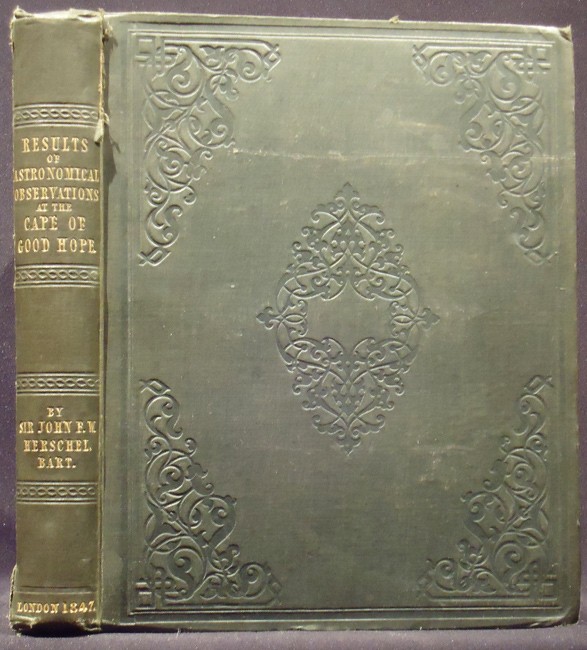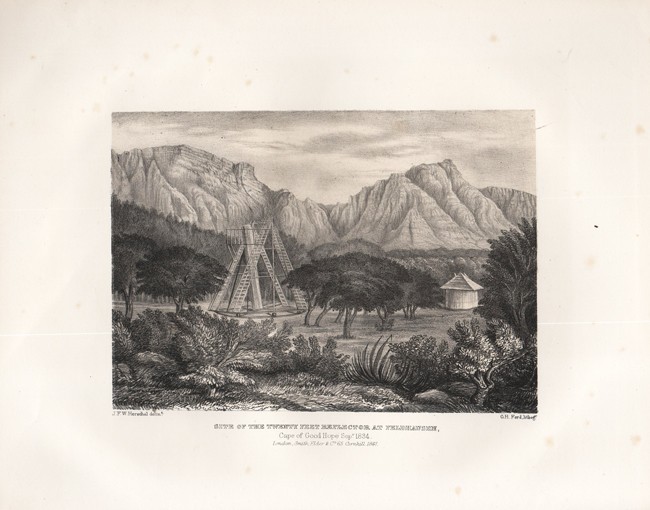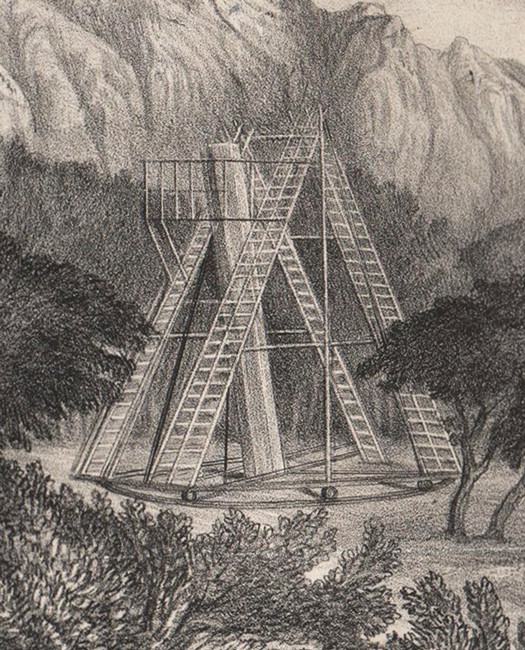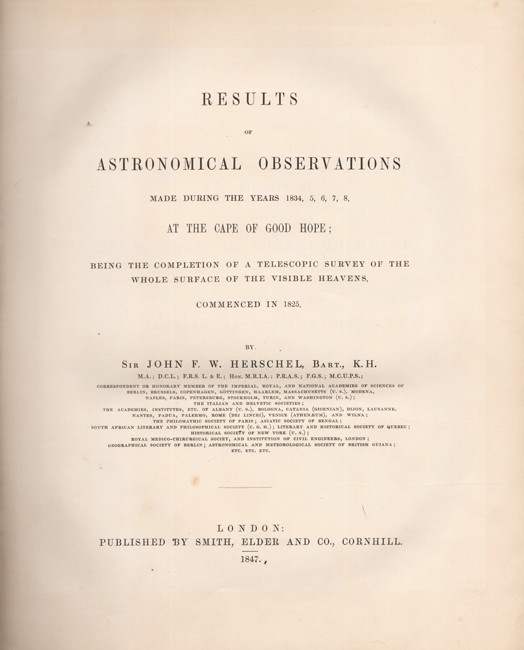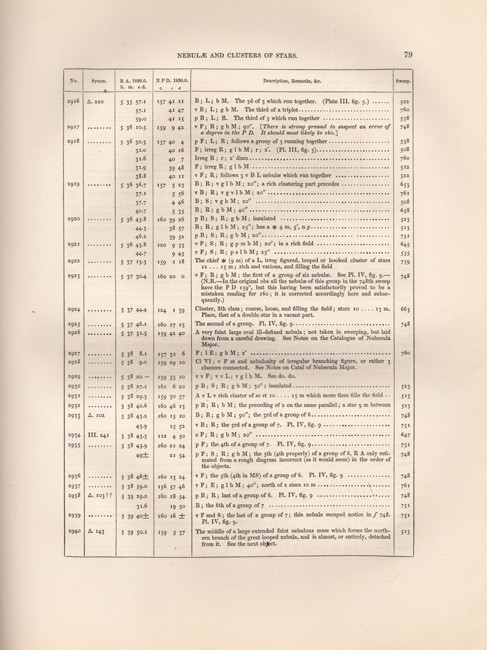452 pages, lithographic frontispiece, 4 folded plates, charts, drawings, blind stamped green cloth, spine gilt, worn at top and bottom, corners bumped, top edge gilt, contents bright.
From Wikipedia and Standard Encyclopedia of South Africa volume 5 pages 500 -502: John Herschel was born in Slough, Buckinghamshire, the son of Mary Baldwin and William Herschel in 1792. He studied shortly at Eton College and St John's College, Cambridge, graduating as Senior Wrangler in 1813. It was during his time as an undergraduate that he became friends with Charles Babbage and George Peacock. He took up astronomy in 1816, building a reflecting telescope with a mirror 18 inches (460 mm) in diameter and with a 20-foot (6.1 m) focal length. Between 1821 and 1823 he re-examined, with James South, the double stars catalogued by his father. For this work, in 1826 he was presented with the Gold Medal of the Royal Astronomical Society (which he won again in 1836), and with the Lalande Medal of the French Academy of Sciences in 1825, while in 1821 the Royal Society bestowed upon him the Copley Medal for his mathematical contributions to their Transactions. Herschel was made a Knight of the Royal Guelphic Order in 1831. He served as President of the Royal Astronomical Society three times: 1827–29, 1839–41 and 1847–49.
Declining an offer from the Duke of Sussex that they travel to South Africa on a Navy ship, Herschel and his wife paid £500 for passage on the S.S. Mountstuart Elphinstone, which departed from Portsmouth on 13 November 1833. The voyage to South Africa was made in order to catalogue the stars, nebulae, and other objects of the southern skies. This was to be a completion as well as extension of the survey of the northern heavens undertaken initially by his father William Herschel. He arrived in Cape Town on 15 January 1834 and set up a private 21 ft (6.4 m) telescope at Feldhausen at Claremont, a suburb of Cape Town. Amongst his other observations during this time was that of the return of Comet Halley. Herschel collaborated with Thomas Maclear, the Astronomer Royal at the Cape of Good Hope and the members of the two families became close friends. In addition to his astronomical work, however, this voyage to a far corner of the British empire also gave Herschel an escape from the pressures under which he found himself in London, where he was one of the most sought-after of all British men of science. While in southern Africa, he engaged in a broad variety of scientific pursuits free from a sense of strong obligations to a larger scientific community. It was, he later recalled, probably the happiest time in his life.
In 1847 after his return to England he published his findings in his Results of Astronomical Observations. His work included cometary observations, especially of Halley's and Encke's comments and an account of the nova outburst of Eta Carina. Using an instrument of his own design, the astronomer, for comparing the brightness of a star with a reduced image of the full moon, founded objective stellar photography he formulated a scheme for delimitation of the constellations and improvement of their nomenclature. He died in 1871.
- Size: Folio (330 x 260mm)
- Sold By: Clarke's Africana & Rare Books
- Contact Person: Paul Mills
- Country: South Africa
- Email: [email protected]
- Telephone: 021 794 0600
- Preferred Payment Methods: Visa & Mastercard via PayGate secure links and Bank transfers.
- Trade Associations: ABA - ILAB, SABDA


